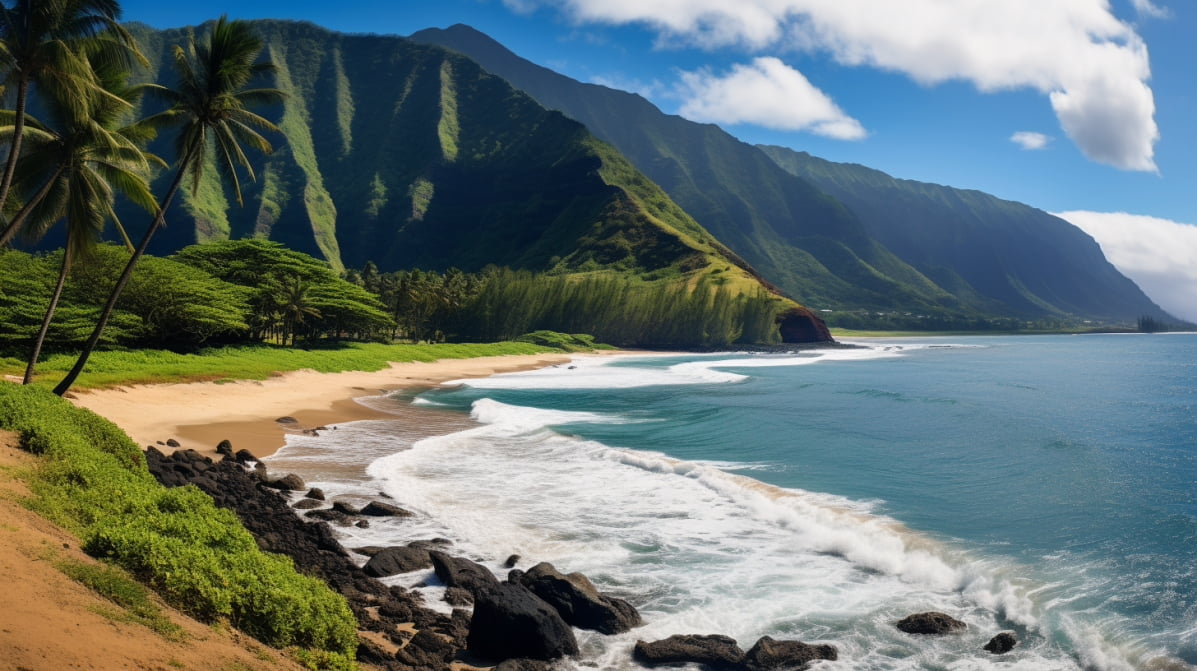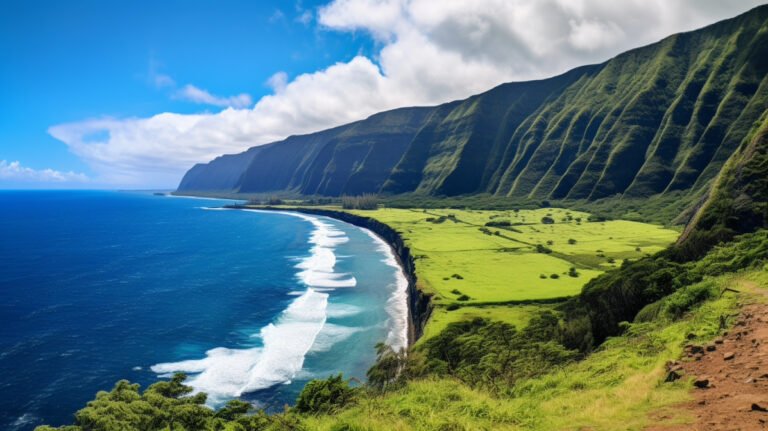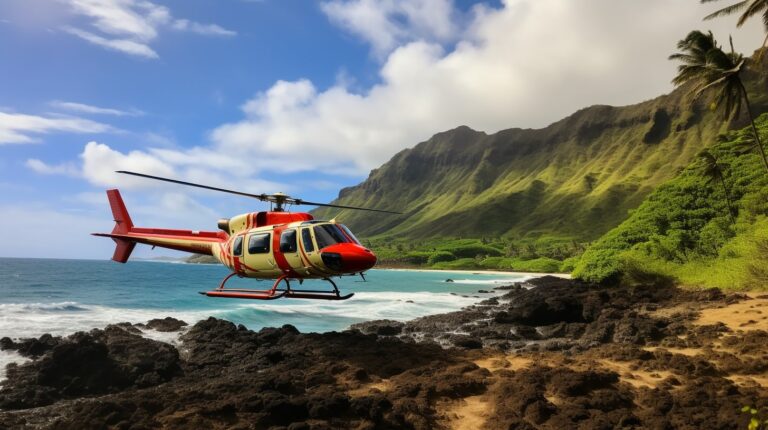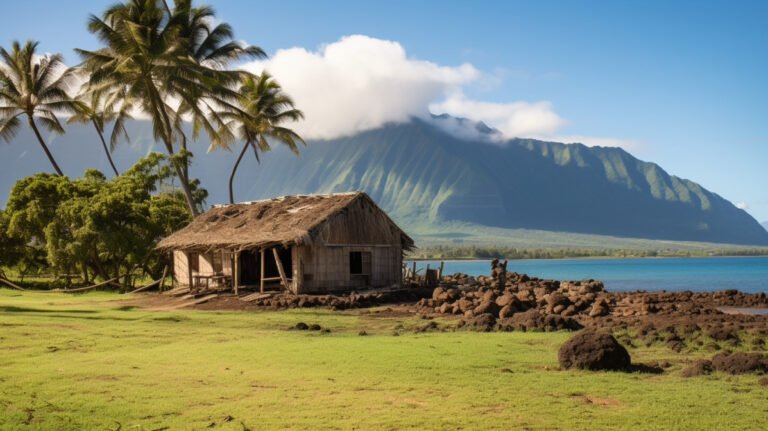Explore Molokai Responsibly and Respectfully 🌴: Essential Guidelines for Visitors
If you’re planning a trip to Molokai, it’s essential to be aware of the laws and regulations that apply to tourists. Understanding these regulations will help ensure that you have a safe and enjoyable stay on the island, while also respecting the local culture and environment. Here are some of the key laws and regulations that you need to know before you start your Molokai adventure.
Key Takeaways:
- Compliance with Molokai’s laws and regulations is necessary for safe and enjoyable travel.
- Respecting local culture and environment is crucial when visiting Molokai.
- Understanding the regulations will help tourists avoid unintentional violations and ensure a smooth stay.
Permits and Entry Requirements
Before planning a trip to Molokai, it is crucial for tourists to be aware of the entry requirements and permits necessary for visiting the island.
Visa and Passport Regulations
Visitors to Molokai from other countries are required to have a valid passport and may need to obtain a visa, depending on the country of origin. It is essential to check the visa requirements and application process beforehand, as it can take several weeks to obtain a visa. Travelers are advised to keep their passports and other travel documents in a safe place at all times.
COVID-19 Travel Restrictions
In response to the COVID-19 pandemic, the State of Hawaii has implemented specific travel restrictions to help prevent the spread of the virus. Currently, all visitors to the island must have a negative COVID-19 test result taken within 72 hours before arrival. Quarantine measures are also in place for those who do not fulfill the testing requirement. It is essential to check the latest COVID-19 travel guidelines before planning a trip to Molokai.
Transportation Regulations
When driving on Molokai, visitors must comply with standard traffic laws, including speed limits, seatbelt rules, and driving under the influence. The use of mobile phones while driving is prohibited unless using a hands-free device. Additionally, rental vehicles and bicycles must comply with specific regulations and guidelines. The use of off-road vehicles is strictly prohibited, and tourists are advised to stick to designated trails and roads.
Activities and Permits
Specific activities in Molokai require permits or licenses that visitors must obtain before participating. These may include fishing, hunting, camping, and hiking in certain areas. It is essential to research the necessary permits for planned activities and apply for them in advance to ensure compliance with local regulations.
By following the necessary entry requirements and permit regulations, tourists can help to preserve the natural beauty and cultural heritage of Molokai.
Environmental Conservation Regulations
When visiting Molokai, it is important to be aware of the regulations in place to protect the environment and wildlife. The island’s unique ecosystem is home to many rare and endangered species, and therefore, it is the responsibility of visitors to be respectful and conscious of their impact on the environment.
Some of the regulations and guidelines to keep in mind include:
| Regulation | Description |
|---|---|
| Leave No Trace Policy | To preserve the natural beauty of Molokai, visitors are expected to carry out any trash or waste they bring in and dispose of it properly. This includes properly disposing of cigarette butts and food scraps. |
| Marine Wildlife Interaction Guidelines | To protect the marine life in Molokai’s waters, it is prohibited to touch or feed any marine animal, including sea turtles and monk seals. Visitors are also advised to maintain a safe distance from them. |
| Hunting Restrictions | Certain areas of Molokai have restrictions in place when it comes to hunting, fishing, and gathering. Visitors should be aware of the specific areas where these activities are prohibited or allowed only with a permit. |
| Protected Areas | Molokai is home to many protected areas, including nature reserves, national parks, and cultural sites. Visitors should take care not to disturb the natural environment or any cultural or historical sites. |
By following these regulations and guidelines, visitors can help preserve the natural beauty and unique culture of Molokai for future generations to enjoy.
Cultural and Historical Guidelines
Molokai has a rich and unique cultural history that is still very much alive and present today. As a visitor, there are certain guidelines you should follow to show respect for the local culture and history.
Respect Traditional Practices
When visiting Molokai, it’s important to remember that you’re a guest in someone else’s home. Respect the traditions and practices of the native Hawaiian people and be mindful of cultural practices that may differ from your own. If you’re unsure about what’s appropriate, ask a local or tour guide before participating in any activities.
Sacred Sites
Molokai has many sacred sites that are spiritually significant to the native Hawaiian people. If you visit one of these sites, be mindful of your behavior and dress code. Avoid wearing bathing suits or revealing clothing, and refrain from touching or removing any objects from the site.
Participating in Cultural Activities
Participating in cultural activities can be a great way to learn about the local culture and history. However, it’s important to be respectful and sensitive when doing so. Follow the guidelines provided by tour guides or trainers, and don’t be afraid to ask questions if you’re unsure about something.
Transportation Regulations in Molokai
When it comes to transportation in Molokai, there are several regulations that tourists should be aware of. Here are some of the most important guidelines:
Road Safety Rules
When driving in Molokai, make sure to follow all road safety rules, including speed limits and traffic signals. The roads can be narrow and winding, so it’s important to drive with caution and be aware of other vehicles and pedestrians.
Public Transportation Options
There are limited public transportation options in Molokai, with a few bus routes and taxi services available. It’s advisable to plan your transportation in advance and consider renting a vehicle to explore the island.
Rental Vehicles and Bicycles
If you plan on renting a vehicle or bicycle in Molokai, make sure to follow all rental regulations and guidelines. This includes obtaining the necessary permits and licenses, adhering to all traffic laws, and properly maintaining the vehicle or bicycle during use.
By following these transportation regulations, tourists can ensure a safe and enjoyable experience while exploring all that Molokai has to offer.
Accommodation Regulations
When it comes to accommodation in Molokai, tourists need to be aware of the regulations and guidelines that govern their stay. These rules ensure that visitors have a comfortable and safe experience while also respecting the local community and the environment.
Here are some key regulations to keep in mind:
- Vacation Rentals: Vacation rentals in Molokai must be licensed and registered with the County of Maui. Visitors are encouraged to check that their rental is compliant with local regulations before booking.
- Camping: Camping is only allowed in designated areas on Molokai, and visitors must obtain a permit from the Department of Parks and Recreation.
- Rental Vehicles: Visitors must follow all traffic laws and regulations when renting a vehicle on Molokai.
It’s also important to note that there may be restrictions on where tourists can stay on the island, especially in sensitive areas like wildlife reserves or cultural sites. Visitors should always check with local authorities or their accommodation provider to ensure they are not in violation of any regulations.
Water Safety Regulations
When it comes to water activities in Molokai, there are important regulations and guidelines that tourists should be aware of to ensure their safety.
Firstly, always check the beach rules and regulations posted at the entrance or nearby. These rules may include restrictions on certain activities, such as surfing or fishing in certain areas, as well as information on tide levels and potential hazards.
It is also important to be aware of rip currents, which can be dangerous for swimmers. Always swim in areas with lifeguards present, and if caught in a rip current, swim parallel to the shore until you are out of the current, then swim back to shore.
If you plan on snorkeling, scuba diving, or engaging in any other water activities, it is important to follow safety guidelines and regulations. This includes ensuring you have the proper equipment and training, staying within designated areas, and avoiding contact with wildlife or protected species.
Remember, always prioritize your safety when engaging in any water activity in Molokai.
Cultural and Historical Guidelines
When visiting Molokai, it’s important to respect the local culture and history. Hawaii is a unique place with a rich heritage, and Molokai is no exception. Here are some guidelines to follow when experiencing the culture and history of Molokai:
Respect Sacred Sites
Molokai has many sacred sites that are of great significance to the Hawaiian people. Visitors should treat these sites with respect and avoid any behavior that could be seen as disrespectful. This includes not climbing on or touching any structures, not leaving any trash, and not disturbing any offerings or artifacts.
Dress Appropriately
Hawaii has a warm and tropical climate, but it’s important to dress appropriately when visiting sacred sites, cultural events, or formal occasions. Visitors should cover their shoulders and wear clothing that extends past their knees. Beachwear and shorts are not appropriate for these occasions.
Participate Respectfully in Cultural Activities
Visitors are welcome to participate in cultural activities such as hula or lei-making classes. However, it’s important to do so with respect and sensitivity. Visitors should follow the instructor’s guidance and take care not to offend anyone or misrepresent the culture.
Treat Locals with Respect
Visitors should treat locals with respect and kindness. Hawaiians are known for their hospitality and aloha spirit, but this should not be taken for granted. Visitors should avoid any behavior that could be seen as rude or disrespectful.
By following these cultural and historical guidelines, visitors can experience the rich heritage of Molokai while showing respect for the local culture and traditions.
Health and Safety Guidelines
When visiting Molokai, it’s important to be aware of potential health and safety risks to ensure a safe and enjoyable trip.
Medical Facilities
Molokai has limited medical facilities, with only one hospital on the island. It’s important to take any necessary medication with you, as it may not be available locally. If you have a medical condition, be sure to bring your medical records with you in case of an emergency.
Emergency Services
In case of an emergency, dial 911 for immediate assistance. Due to the island’s remote location, it may take longer for emergency services to arrive.
Health Precautions
As with any tropical location, mosquitoes can be present in Molokai, so be sure to bring insect repellent and wear protective clothing. It’s also important to stay hydrated and wear sunscreen to avoid sunburn. Drink and use bottled water to avoid any potential health risks associated with local tap water.
Safety Concerns
Molokai is a relatively safe place to visit, but tourists should still exercise caution, especially at night. Avoid leaving valuables in unattended vehicles and keep your personal belongings close to you at all times. When driving, be aware of the narrow and winding roads, and always wear a seatbelt.
Natural Hazards
Molokai is prone to natural hazards, including flash floods and earthquakes. Be aware of any warning signs and follow any instructions from local authorities. If you plan to hike or explore nature reserves, be sure to take appropriate safety measures, such as staying on marked trails and being prepared for changing weather conditions.
Local Etiquette and Customs
When visiting Molokai, it’s important to be aware of the local etiquette and customs. The island has a rich history and culture that is deeply ingrained in the daily lives of its residents. Here are a few guidelines to keep in mind:
Greetings and Respect
Molokai residents place great importance on showing respect to others, particularly elders and those in positions of authority. It’s customary to say “aloha” when greeting someone, and to use titles like “Aunty” or “Uncle” when addressing elders or those who hold a position of respect. Remember to show respect for private property and avoid trespassing on land that you have not been given permission to enter.
Cultural Activities
Molokai has a rich cultural heritage that is celebrated through various activities and events. Visitors are always welcome to participate in cultural events, but it’s important to do so with respect and sensitivity. If you plan to attend a cultural event, dress appropriately and ask for guidance on appropriate behavior or customs.
Local Traditions
Molokai has a strong sense of community and many traditions that are still practiced today. Visitors should be respectful of these traditions and avoid disrupting them. For example, it’s customary for many businesses to close on Sunday as a day of rest, and it’s important to observe this tradition and plan your activities accordingly.
Conservation and Environment
Molokai is home to a diverse range of flora and fauna, and residents are passionate about preserving the island’s natural beauty. As a visitor, it’s important to be mindful of the impact your actions have on the environment. Always follow the “Leave No Trace” principles, and respect any rules or guidelines in place to protect the island’s natural resources.
Conclusion
By being respectful and mindful of local customs and traditions, visitors can enjoy all that Molokai has to offer while also contributing to the well-being of the island and its communities.
Conclusion
In conclusion, visiting Molokai can be incredibly rewarding when you respect the local laws and regulations. From entry permits to conservation rules, transportation laws to accommodation policies, be sure to follow all guidelines mindfully. This ensures a safe, enriching, and mutually beneficial experience.
By adhering to health protocols, environmental protections, cultural customs, and legal requirements, you can positively impact the community and environment. Appreciate Molokai’s heritage and natural beauty responsibly.
Immerse yourself in the island’s riches while preserving them for the future. Download the Molokai Travel Guide Molokai Travel Guide now to learn how to visit Molokai lawfully, sustainably, and respectfully. Discover the island the right way.







